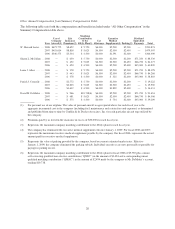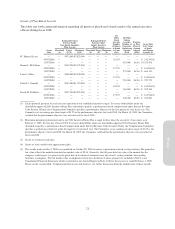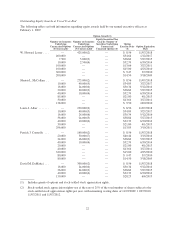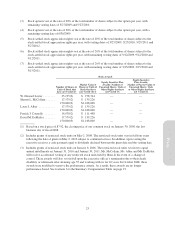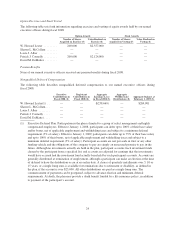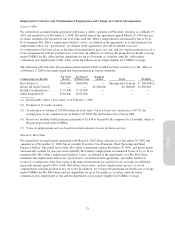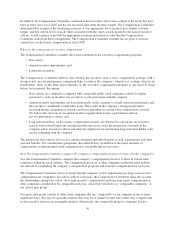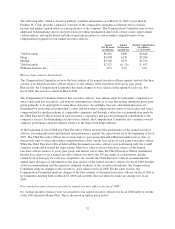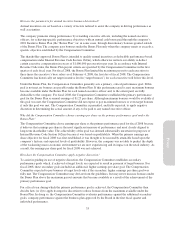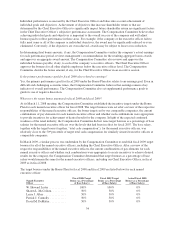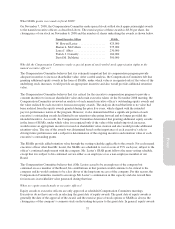Pottery Barn 2008 Annual Report Download - page 128
Download and view the complete annual report
Please find page 128 of the 2008 Pottery Barn annual report below. You can navigate through the pages in the report by either clicking on the pages listed below, or by using the keyword search tool below to find specific information within the annual report.In addition, the Compensation Committee continued named executive officer base salaries at the levels that have
been in effect since fiscal 2007 and has not increased short-term incentive targets. The Compensation Committee
determined that, in light of the weakening economy, it was appropriate not to increase base salaries or bonus
targets, and that current levels of each, when considered with the equity awards granted to the named executive
officers, would continue to provide the appropriate retention and incentive value that the Compensation
Committee seeks from these arrangements. The Compensation Committee currently has no plans to increase
current base or short-term compensation in fiscal 2009.
What are the components of executive compensation?
The Compensation Committee considers three major elements in the executive compensation program:
• Base salary;
• Annual incentive opportunities; and
• Long-term incentives.
The Compensation Committee believes that offering the executive team a total compensation package with a
strong at-risk, pay-for-performance component helps to achieve the company’s objective of creating value for its
shareholders. Each of the three major elements in the executive compensation program is discussed in detail
below, but in general, this means:
• Base salaries are competitive compared with comparable public retail companies relative to similar
positions to create an incentive for executives to join and remain with the company;
• Annual incentive opportunities are based principally on the company’s overall corporate performance and
the executive’s attainment of individual goals. This results in the company’s strongest performers
receiving greater compensatory rewards and lesser performers receiving lower compensatory rewards.
We believe the structure of our annual incentive opportunities fosters a performance-driven,
pay-for-performance culture; and
• Long-term incentives, such as equity compensation awards, are structured to encourage our executive
team to work toward long-term sustained growth and success from the perspective of owners in the
company and to reward executives and other key employees for maximizing long-term shareholder value
and for remaining with the company.
The named executive officers also receive certain retirement and other benefits, as well as perquisites and other
personal benefits. We consider these perquisites (described below), in addition to the major elements of
compensation, in determining if total compensation is reasonable and not excessive.
Does the Compensation Committee compare the company’s compensation practices to those of other companies?
Yes, the Compensation Committee compares the company’s compensation practices to those of certain other
companies within the retail industry. The compensation practices of other companies within the retail industry
are relevant to establishing the company’s compensation programs and executive compensation for each year.
The Compensation Committee strives to ensure that the company’s total compensation packages and executive
compensation are competitive. In order to achieve such goals, the Compensation Committee takes into account
the relationships among base salary, short-term incentive compensation and long-term equity compensation at
other companies considered to be comparable each year, collectively referred to as “comparable companies” or
our “proxy peer group.”
Our proxy peer group consists of other retail companies that are “comparable” to our company in one or more
significant ways: they may be specialty retailers, they may be of similar revenue size or they may compete with
us for executive talent in our geographic markets. Historically, the comparable group of companies has not
30


